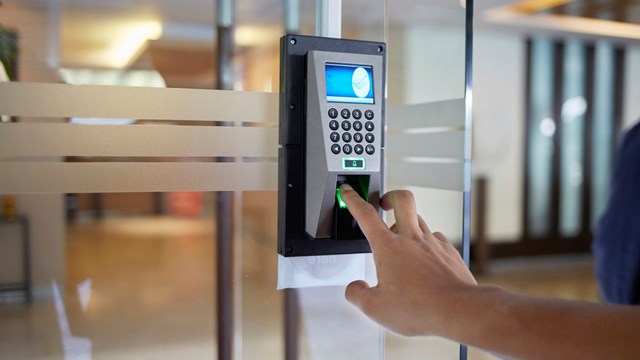We all know that technology is continuously evolving—sometimes faster than the physical and mechanical infrastructure around it. A glaring example of this is intercom systems. They’re standard fare in nearly every apartment building, from tenements to high-rises, giving residents the ability to screen visitors and deliveries, keeping both people and property secure.
The problem? Today’s technology is often based in the cloud or on our phones, whereas the technology of intercom systems is often hardwired into physical doors and walls, making it difficult to integrate into how modern apartment-dwellers operate. To better understand how to connect yesterday with today and eventually tomorrow, we spoke with Allan Liers, president and founding partner of Metro Security Experts, an intercom technology and solutions firm with offices in Smithtown, New York and Sussex, New Jersey.
COOPERATORNEWS: Great having you here with us today, Allan. To start, talk to us a little about the major problems encountered when replacing intercom systems in older buildings? Let’s start with prewar buildings built before WWII.
ALLAN LIERS: “Often, their original wiring infrastructure is obsolete, with deteriorated insulation—things like cloth-wrapped wires, for example—that can be a safety hazard. These systems typically use a few dedicated wires which are incompatible with modern IP-based or multi-wire systems, and that requires a complete rewire.
“Next, there are usually structural barriers to overcome. Prewar buildings often feature thick walls made of solid concrete, plaster, and metal lathe, making it extremely difficult, time-consuming, and costly to run new wiring through them without significant damage.
“Another complication may be architectural preservation. Many prewar buildings have protected historic status or intricate architectural details—things like original moldings and ornate stonework that must be preserved. This can limit wiring routes and require creative, non-invasive installation techniques like surface raceways, which must be pre-approved by governing bodies. There may also be hazardous materials present. Disturbing walls and ceilings can expose workers and residents to materials like asbestos in insulation and lead paint, requiring professional abatement and special permits.
“Finally, the location of the existing power supply may present a problem. Original systems may lack sufficient power sources in convenient locations for modern components, which require more reliable power and often an advanced IT/communications infrastructure that the building wasn't designed for.”
CN: Are there different issues and concerns in postwar buildings built after World War II but before, say, 1990?
AL: “You still have outdated wiring, but it’s less ‘historic.’ While not as old as prewar systems, wiring from the 1960s-1980s is still likely outdated, with a typical lifespan of 25-50 years. The insulation may be brittle, and the system might use proprietary wiring configurations that don't support modern features like video or mobile integration. Postwar buildings may have used different construction techniques, such as thin concrete on a steel structure and thinner drywall than prewar properties, but may offer more space for new wiring than their older counterparts, but they still present challenges if a full rewire is needed in occupied residences. Another consideration is that systems have simply become obsolete, and parts may not be easily replaced or substituted. Systems from the heyday of home intercoms, like the 1960s and 70s ‘NuTone’ systems, used specific parts, often including built-in radios or cassette players, which are no longer manufactured, making repairs impossible and necessitating full replacement.
“There are also aesthetic concerns when replacing an aging system. When old systems break down, the in-unit panels leave large, visible holes in walls that must be patched or covered after removal, which can be an aesthetic concern for owners or tenants. Then there are issues with integration and modern needs. These buildings were not designed with modern tenant expectations in mind, such as wifi integration, smartphone apps, or video streaming, which are standard features in current intercom systems.
CN: What are the common overarching challenges you encounter when undertaking an intercom replacement?
AL: “The first considerations are always cost and disruption to residents. Full replacement can be expensive and highly disruptive due to the construction work involved in running new cables through walls and common areas. There’s also often a lack of documentation. Original wiring paths and junction boxes may be poorly documented or hidden, making auditing the existing infrastructure a significant initial hurdle. Code compliance is also a potential problem. New installations must meet current electrical and building codes, which older buildings often do not inherently support without substantial upgrades. There’s also a practical problem with ‘interference.’ Running new data cables near existing, unshielded electrical wiring in older buildings can sometimes lead to signal interference and degraded performance of modern IP-based systems.”
CN: What is the best option for these buildings when replacing old intercoms?
AL: “My initial recommendation is generally to retain the existing infrastructure with the exception of the panel, so there is no disruption to the overall system. Alternatively, install systems that rely less on cabling and need installing devices in the apartments. That eliminates capital expenses (cabling, fobs, construction, integration, etc.) and reduces operating expenses (energy, people, process, training and support costs).
CN: In general, what type of system is better for residents and for co-op and condominium communities, in-wall systems with old fashioned bells and buzzers, or Wifi and phone based systems? What are their respective drawbacks and benefits?
AL: “The old-fashioned wired systems are ultra simple to use, but they cost a lot to maintain and only do one job— namely, notifying you that someone is at the door. The new systems add features and services that can elevate the occupant experience, provide new options such as package management, provide deep insights for security providers and may reduce TCO, total cost of ownership, in the long term.”
CN: What recommendations do you make to co-ops and condos seeking new systems?
AL: “Your existing technology systems are becoming obsolete rapidly, so invest in the system that protects and future proofs your investment and does more for less. Seek systems that reduce capital expenses and operating expenses. I recommend systems that elevate the occupant experience, as people are seeking convenience and will pay more for it.”










Leave a Comment